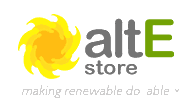Solar Rebates & Renewable Energy Incentives
It’s a great time to go solar in America! On August 16, 2022, President Biden signed the Inflation Reduction Act into law. Among its provisions is an increase of the Federal Solar Tax Credit (also known as the Solar ITC) to 30% through 2032 and the inclusion of off-grid (standalone) systems into its scope.
This increase of the Solar ITC to 30% applies retroactively to all qualifying grid-tied and hybrid systems installed in 2022, and will apply to off-grid systems installed after 12/31/22. Learn more about the Federal Solar Tax Credit and how to claim it, and see the note below about adding battery storage in 2022 to a pre-existing grid-tied solar system.
Click on your state or territory below to learn about additional solar rebates and incentives available there. By taking advantage of all available solar rebates, incentives, and tax credits in your area, you could save as much as 50% or more on your installed system.
For existing grid-tied solar systems (PV systems connected to the electrical grid but without batteries) installed prior to 12/31/21 that had battery storage added to them during 2022, the battery storage components likely qualify for the 30% rate. The IRS issued private rulings in 2013 and 2018 allowing certain individuals to apply the Federal Solar Tax Credit to their battery storage installations paired with (and charged exclusively by) PV, but these private rulings do not constitute broad legal precedent. If you plan to add batteries to an existing grid-tied solar system before the end of 2022, it is advisable to consult with your accountant or tax professional before planning to claim the Tax Credit at the new 30% rate.


